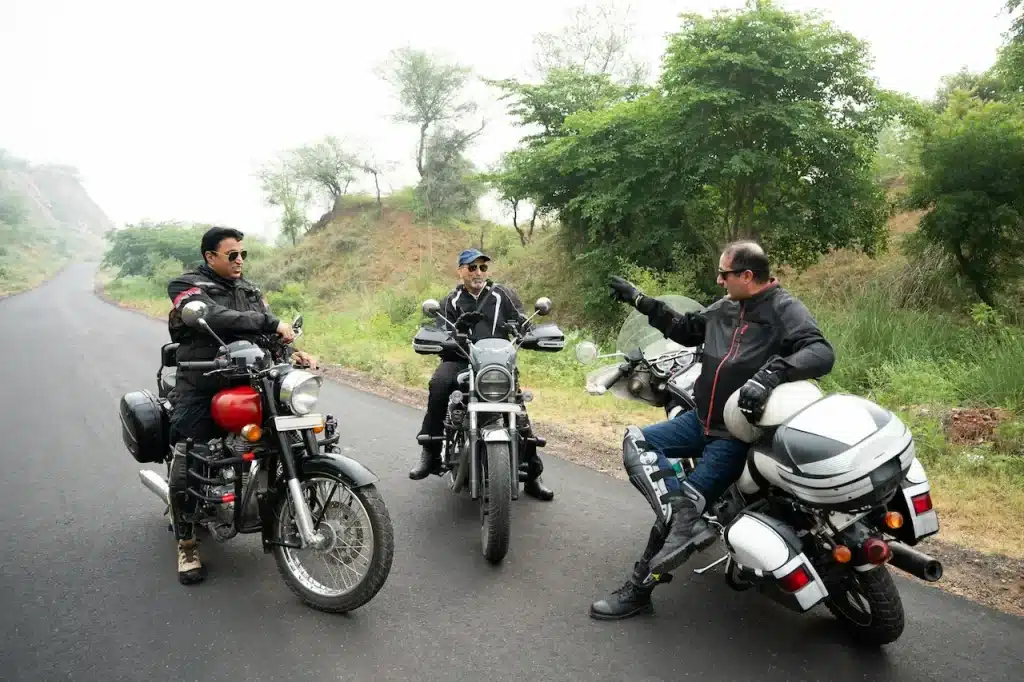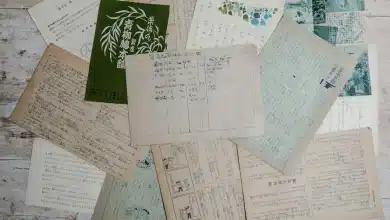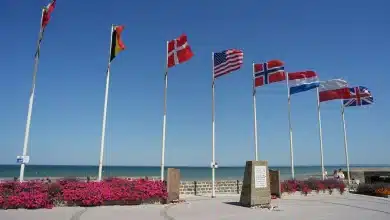The American highway is a long-standing symbol of freedom. It’s a stretch of wide-open road where the sound of an engine can be heard more clearly than any words. The outlaw biker is a legendary figure from modern folklore who rides along that road. They embody a deeply ingrained image in American popular culture, with leather jackets and Harley-Davidsons roaring at full throttle.
Who are the men and women behind the club patches and chrome? Outlaw bikers are they merely misunderstood rebels who uphold an old-school code based on brotherhood and independence, or do they represent a group of misunderstood outlaws? Are they members of criminal groups that are worth billions and engage in crimes such as drug trafficking, weapon dealing, and murder, or, as some law enforcement agencies claim, do they belong to billion-dollar criminal gangs?
The truth is somewhere between the two extremes.

The Mythology of the Open Road
Outlaw bikers captured the American imagination since the 1950s. The Wild One and Easy Rider introduced audiences to new anti-heroes: men on motorcycles living outside of the boundaries of society. The biker was more than just a man on a motorcycle; he became a symbol. Freedom. Of defiance. Of danger.
They smoked even when it was forbidden. Leather was worn in the summer heat. They didn’t give a damn what people thought.
The portrayals were influential, but they only touched the surface. The glamorised look was rarely explored.
Outlaws By Name–and Design
Outlaw motorcycle club members (OMCs), often refer to themselves by the term “one percenters” – a term that was coined from a statement made once by the American Motorcyclist Association, which stated “99% of all motorcyclists were law-abiding”. What is implied? The elusive 1% of motorcyclists is not what it seems.
This 1% includes clubs like The Bandidos, The Warlocks and The Outsiders.
This is not your typical weekend rider group that meets up for barbecues or group rides. Hierarchical, structured organisations, with chapters all over the country and sometimes the world. Members wear vest patches that represent rank, territory and loyalty.
With loyalty comes secrecy and suspicion.
Brotherhood of Criminal Syndicates or Brotherhood of Criminal Syndicates?
We must walk a fine line between myth and fact to truly understand the phenomenon of outlaw motorcycles. Start with what the insiders have to say.
The Brotherhood Narrative
Any member of an outlaw motorcycle club will likely talk about brotherhood, a deep and personal loyalty that binds the members closer than their families. Joining a club can fill a void for many. It provides structure, purpose and a feeling of belonging.
Former members speak of a life filled with rituals, camaraderie and tradition. Club meetings, or “church”, annual runs and a strict code of conduct are all part of the club’s culture. Before earning their patch, prospects (recruits), go through months or even years of probation. It’s not an easy task, but that’s exactly the point.
Biker clubs are often misunderstood. Not illegal; just anti-establishment. Not dangerous; just different.
Critics say that this feeling of brotherhood allows organised crime to thrive under the surface.

The Law Enforcement Perspective
The FBI, DEA and other law enforcement agencies do not view clubs such as the Bandidos or Warlocks as rebels. These are organised criminal groups and dangerous ones.
Many investigations have been conducted over the years that link outlaw clubs with:
- Drug trafficking – especially cocaine and methamphetamine
- Illegal Weapon Sales
- Racketeering and Extortion
- Violent turf battles between rival gangs
- Murder-for-hire schemes
For example, the Bandidos have been scrutinised for decades. They were founded in Texas in 1966 and now have over 2,000 members on multiple continents. The U.S. Department of Justice has classified them as “criminal enterprises” and alleges that they control drug distribution across the southern United States.
The warlocks have roots in Florida and are also implicated in violent confrontations between rival clubs as well as meth labs. Tom “Grub’ Freeland” was their founder and famously stated, “We are what your parents warned about.”
There’s also the Outsiders – a less-known, but more notorious club that has a reputation for brutally enforcing territory and an almost cult-like culture within. The name of the club reflects its ethos. They are proud outsiders who reject the norms and laws of mainstream society.
For every club member who is arrested or convicted, there are many more who insist on their innocence and claim that their clubs have been unfairly targeted. Who’s telling the truth?
The Hidden World of Ritual and Rank
In many ways, outlaw clubs are similar to militaries. There is a chain of command that extends from the national leader down the line of hangarounds. In this rigid structure, the key to success is discipline.
Every club has their own rules and patches. Initiations are also different. Violations of the code may result in harsh punishments, such as expulsion or beatings. In some cases, leaving a club can be a matter of life and death.
Clubs, despite their unbridled reputation of lawlessness, often have elaborate constitutions that are elaborate and they hold regular meetings for voting on club issues. To settle disputes, they have internal courts. Some have even started charitable initiatives, such as toys for children, food drives and disaster relief. Acts that may help to soften their image, but not erase the stigma.
The Biker Turf Wars: Territory and War
The intense focus of outlaw bikers on territories is one of the most dangerous aspects. The patches often have state or city names. Wearing the wrong patch at the wrong time can result in violent confrontations.
These turf battles aren’t about pride. They’re about control of lucrative drug routes, protection rackets and illicit enterprises. In 2015, the Waco Shootout, which resulted in nine deaths and 20 injuries, was the outcome of a turf war between the Bandidos, a prominent biker club, and the Cossacks.
Insiders say the violence was nothing new. It’s just the latest chapter of a long-standing history of motorcycle-on-biker war.
Pop Culture and Reality
Outlaw bikers are always seen as heroes and villains in the media. Sons of Anarchy was a hit FX show that painted a gritty but sympathetic portrait of an imaginary club that dabbled with crime while upholding its twisted codes of justice.
The truth is more cinematic. Outlaw clubs in real life are neither misunderstood villains nor cartoons. They are complex, secretive and vary greatly from chapter to chapter.
Some chapters are largely law-abiding, focusing on rides and brotherhood. Some chapters may be heavily involved in organised crime. The same club may be called different things at different locations.
Outlaw bikers are polarising because of their ambiguity.
The Global Reach of the Patch
What started as a purely American phenomenon has now gone global.
Outlaw biker groups now have chapters throughout Europe, Australia and Canada. They also exist in South America and Asia. In Germany and the Netherlands, law enforcement has dedicated entire task forces to monitor the activities of biker clubs.
The Hells Angels are active in over 50 countries. The Bandidos follow close behind.
Some clubs have infiltrated local businesses, politics, law enforcement and even the police, blurring any distinction between a fringe group and a mainstream influence.

Should we be afraid of them?
It depends on where and who you are.
The danger is real if you are a rival team and step on the wrong part of the road. The danger is more ambiguous for civilians. The majority of outlaw motorcycle riders avoid the public. Violence is usually internal, targeted or business-related.
The innocent rebel biker is not the persona that many people associate with the image.
There is a good reason why the FBI has a task force dedicated to outlawing motorcycle gangs. There is a reason why chapters are under constant surveillance. You won’t find these clubs inviting journalists to their meetings.
The Road Ahead
The outlaw biker scene isn’t disappearing. Every crackdown opens a new chapter. Every arrest brings in a new member. It’s hard to resist the allure of freedom, brotherhood and the road. For some, it’s irresistible.
It depends on who you ask if these clubs are dangerous criminal syndicates or just misunderstood outsiders. One thing is certain: The open road holds many secrets. Somewhere out there, away from the gaze of the media and beyond the reach of the law, engines still rumble.
Welcome to the world of outlaw motorcycles, where leather, loyalty and lawlessness are the hallmarks.




